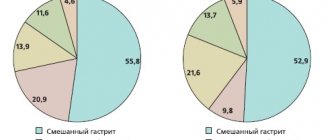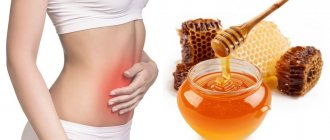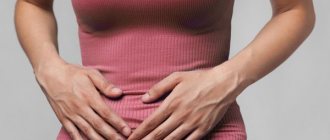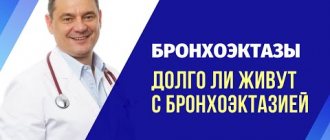Gastroenterologist
Neronov
Vladimir Alexandrovich
24 years of experience
Gastroenterologist, Doctor of Medical Sciences
Make an appointment
A disease of the esophagus called esophagitis is characterized by inflammation of the lining of the esophagus. Accompanied by discomfort, burning sensation and pain in the area behind the sternum. It occurs when gastric contents enter the esophagus due to pathological opening of the cardinal foramen (sphincter). Research by the World Health Organization shows that about 50% of the population of developed countries suffer from this disease. Literally 30% seek medical help, and no more than 4% follow recommendations and receive qualified therapy.
Information about the disease
According to epidemiological studies, about 23.6% of the adult population suffers from gastroesophageal reflux disease in Moscow. The peculiarity is the chronic and recurrent nature of the disease. The reflux of gastric contents into the lower parts of the esophagus occurs spontaneously. At the point of contact with the mucous membrane, an inflammatory process develops, which becomes the cause of discomfort and poor health. In medical practice, the full name of the disease is gastroesophageal reflux disease (GERD).
Therapy for young children
In babies, reflux causes frequent burping. Treatment consists of several stages:
- Postural therapy. You need to feed the baby in a sitting position, holding him at an angle of 45-60 degrees. At the end of feeding, this position must be maintained for another twenty to thirty minutes, after which the baby can be placed on his back, with his head elevated at an angle of 30 degrees.
- Dietary correction. It is recommended to reduce the child’s daily feeding volume, while increasing the total number of feedings. If breastfeeding is carried out, the mother should take breast milk thickeners. Formulas containing gum, such as Nutrilon AR, Nutrilak AR, Humana AR, or rice starch, such as Enfamil AR, are recommended for bottle-fed infants.
- Treatment of GERD in young children is also not complete without taking prokinetic drugs (Motilium, Motilak, Cerucal), antacids (Phosphalugel) and antisecretory drugs (Losec). The dosage should be selected only by a specialist.
Presentation of symptoms and signs
Reflux esophagitis manifests symptoms and signs with varying degrees of severity, which depends on the stage of the disease:
- heartburn (the most common manifestation);
- pain in the chest near the heart;
- lump in throat and difficulty swallowing;
- frequent cough and inflammation of the respiratory tract;
- weight loss;
- hoarse voice;
- poor sleep;
- nausea and belching;
- bloating;
- vomit.
Are you experiencing symptoms of reflux esophagitis?
Only a doctor can accurately diagnose the disease. Don't delay your consultation - call
How to understand that esophageal esophagitis has begun to develop
The severity of symptoms in the acute course of the pathology depends on the severity of inflammation of the organ. In the catarrhal form, esophagitis may not cause symptoms, only occasionally it is manifested by increased sensitivity of the esophagus to cold or hot foods. Severe forms of the pathology are accompanied by severe pain in the chest, radiating to the back and neck, dysphagia due to severe pain, heartburn and increased salivation. In especially severe cases, vomiting with blood may occur, leading to shock. After a week, the patient may feel imaginary well-being and notice the disappearance of unpleasant symptoms, but without proper treatment, after a few weeks, esophagitis will lead to the formation of rough scars and stenosis, which will provoke the progression of swallowing disorders and regurgitation of food.
The main symptom of chronic esophagitis is heartburn, which worsens after eating spicy and fatty foods, coffee and highly carbonated drinks. Overeating can also cause a burning sensation in the epigastric area. At night, the patient may experience regurgitation.
Often other pathologies are associated with esophagitis:
- Bronchial asthma;
- Laryngospasm;
- Breathing disorders;
- Frequent pneumonia.
In children under 1 year of age, esophageal sphincter insufficiency is diagnosed with repeated heavy regurgitation in a horizontal position immediately after feeding. At an older age, children complain of paroxysmal pain in the epigastrium, especially after eating hot food. The pain syndrome intensifies when bending the body, performing physical exercises and at night. Young children are often bothered by nausea and vomiting, while older children are often bothered by heartburn and belching. After waking up, a wet, colorless or yellowish spot may be found on the child’s pillow due to regurgitation. If the disease is not treated in childhood, it threatens bleeding, scarring and stenosis of the esophagus, the development of aspiration pneumonia and anemia.
Causes of the disease
For the disease esophagitis, the causes lie in a number of factors that lead to lifestyle changes. In this aspect, there is an unhealthy diet high in fat, frequent consumption of carbonated drinks, etc. The list of reasons also includes the following:
- disturbance of intestinal motility;
- diabetes;
- metabolic syndrome;
- infections (fungi of the genus Candida, herpes simplex virus, cytomegalovirus);
- hiatal hernia;
- irritable bowel syndrome;
- taking certain groups of medications;
- cardiovascular disease.
My approach to treatment
When surgically treating patients with reflux esophagitis, I, like most specialists in European clinics, use a more effective technique that does not have the above-mentioned disadvantages - partial Toupet fundoplication with a cuff rotation of 270°. The technique I improved has a number of advantages:
- the physiological functioning of the esophageal sphincter is restored;
- maintaining a functional esophagogastric valve allows the patient to do without medications throughout his life;
- the ability to belch and vomit—the body’s natural defense reactions—is preserved;
- no pain after overeating or carbonated drinks;
- the number of relapses does not exceed 2% within a year after surgery, after 5 years this figure is about 4%.
A Russian Federation patent has been issued for an improved technique - Toupet 270° fundoplication.
Reflux esophagitis
Types of GERD, manifestations of the disease and complications
In the medical classification, two types of the disease are distinguished - acute and chronic esophagitis. It differs in the type of inflammatory process. In the acute phase, the walls of the esophagus are exposed, and in the chronic phase, the mucous membrane is affected, with the duration of the disease lasting more than 6 months. Reflux esophagitis begins to develop due to improper nutrition, exposure to chemicals, and extensive infections. In the acute phase, there may be an increase in temperature, general malaise, and discomfort as food moves through the esophagus. Patients experience drooling during attacks, belching, and pain. With alcohol abuse, spicy or rough foods, the inflammatory process progresses. The disease enters the chronic phase. If left untreated, the esophagus changes and scars form.
Esophagitis
print version- home
- >
- For patients
- >
- Gastrointestinal diseases
- >
- Esophagitis
Esophagitis
is a disease of the esophagus, accompanied by inflammation of its mucous membrane, and is one of the very common diseases of the digestive tract.
Causes
The most common cause of esophagitis is the reflux of acidic contents into the esophagus, the so-called gastroesophageal reflux (doctors often call it gastroesophageal), leading to damage to the esophageal mucosa due to the impact of stomach contents on its walls. If esophagitis is caused by reflux, it is called reflux esophagitis.
Other causes of esophagitis include infections (most commonly candida, herpes simplex virus, cytomegalovirus). These infections most often occur in patients with reduced immunity, in particular in those suffering from AIDS or receiving immunosuppressive therapy, glucocorticoids, and antitumor chemotherapy drugs.
Esophagitis can be caused by external factors, such as a chemical burn with an alkali or acid, a solvent (for example, gasoline, acetone), or a strong oxidizing agent such as potassium permanganate. Such esophagitis is usually observed in children after an accidental test or in adults after a suicide attempt using an alkali, acid, solvent or oxidizing agent.
Esophagitis is often observed in alcoholics - in this case, the damaging factor is ethyl alcohol. Esophagitis is provoked by eating very hot, spicy foods - nutritional esophagitis. Physical damage to the esophagus due to radiation therapy or tube insertion can also cause esophagitis.
Symptoms, course of esophagitis
Esophagitis is manifested by dysphagia (a feeling of slowness or obstruction when food passes through the digestive tract), odynophagia (pain when passing food), chest pain (in this case, it is necessary to carry out differential diagnosis with angina), heartburn (burning sensation behind the sternum upon contact of the mucous membrane of the digestive tract with acidic gastric contents - a characteristic sign of reflux esophagitis). With hemorrhagic esophagitis, there may be vomiting of red blood and melena (black, semi-liquid stool).
Types of esophagitis
According to the course, acute and chronic esophagitis are distinguished. Acute esophagitis
is an inflammation of the wall of the esophagus, manifested by pain, especially pronounced during the passage of food. In the vast majority of cases, it occurs in combination with stomach diseases and usually affects the lower part of the esophagus.
The onset of the disease is facilitated by nutritional disorders, burns, chemicals, polyhypovitaminosis, and extensive infection.
In acute esophagitis, body temperature may rise, general malaise may be noted, unpleasant sensations may appear along the esophagus during the passage of food, a burning sensation may occur, and sometimes sharp pain in the esophagus. Patients may complain of pain in the neck, belching, drooling, and difficulty swallowing.
Chronic esophagitis
– chronic inflammation of the wall of the esophagus.
The disease can develop with insufficiently treated acute esophagitis or as a primary chronic process. Chronic esophagitis can develop with prolonged consumption of excessively rough or spicy foods or strong alcoholic drinks. Eosinophilic esophagitis
is a clinical form of esophageal damage that develops against the background of autoimmune diseases. The symptoms of eosinophilic esophagitis are similar to those in patients with gastroesophageal reflux disease, but antisecretory therapy does not bring results. It is believed that the cause of this form of esophagitis is a food or respiratory allergy. This form of esophagitis requires a different treatment approach from GERD, in particular diet and the prescription of hormonal antiallergic drugs.
According to the nature of the inflammatory process and its severity, catarrhal, edematous, erosive, pseudomembranous, hemorrhagic, exfoliative, necrotic and phlegmonous esophagitis are distinguished.
Catarrhal
and
edematous
esophagitis are limited to hyperemia (redness) of the mucosa and its swelling.
Erosive
esophagitis is characterized by the occurrence of erosions (damage to the surface layer) of the mucosa. They occur during an acute infectious process, with chemical and thermal burns of the esophagus.
Hemorrhagic
esophagitis is accompanied by hemorrhages into the wall of the esophagus.
Necrotic
esophagitis develops with severe infection and is accompanied by tissue necrosis of the esophageal wall.
Phlegmonous
esophagitis develops when the wall of the esophagus is damaged by a foreign body, as well as after instrumental examination of the esophagus (esophagoscopy).
According to the localization and prevalence of the inflammatory process, distal
,
proximal
and
total
esophagitis.
Diagnosis of esophagitis
Diagnosis of esophagitis includes x-ray examination, esophagoscopy, esophagomanometry
, which records various types of esophageal motility disorders, and
daily pH measurements
of the esophagus.
Treatment of esophagitis
Treatment of
esophagitis depends on the severity of the disease and can be conservative or surgical.
Conservative treatment is based on taking antacids and alginic acid derivatives, antisecretory drugs, and prokinetics. In addition to drug treatment, endoscopic laser therapy, hyperbaric oxygenation, direct intraesophageal electrical stimulation of the cardia, electrophoresis with novocaine on the epigastric region are used.
Surgical treatment is necessary in cases where conservative treatment has not helped, with complications of esophagitis (strictures, repeated bleeding), with frequent aspiration pneumonia, with Barrett's esophagus (due to the risk of malignancy, i.e. degeneration into oncology).
Patients with esophagitis should follow general lifestyle recommendations
:
- After eating, avoid bending forward and not lying down for 1.5 hours.
- Sleep with the head of the bed raised at least 15 cm.
- Do not wear tight clothing or tight belts.
- Limit the consumption of foods that have an aggressive effect on the mucous membrane of the esophagus (fats, alcohol, coffee, chocolate, citrus fruits, etc.).
- Stop smoking.
Don't start the disease.
Reflux esophagitis without proper treatment progresses and develops into gastroesophageal reflux disease, and it is much more difficult to treat. Doctors classify esophagitis as category K20 in the International Classification of Diseases ICD-10.
Resources for healthcare professionals regarding esophagitis
Literature
- Kozlova I.V., Loginov S.V., Shvarts Yu.G. Gastroesophageal reflux and the degree of esophagitis in patients with coronary heart disease: impact on myocardial repolarization parameters and heart rate variability. // Clinical medicine. - 2004, - No. 9, - p. 33
- Kornienko E.A., Filyushkina E.I., Nasyrov R.A. Chronic esophagitis in children with allergies // Materials of the XVIII Congress of Pediatric Gastroenterologists. – M. – 2011. – 71–73.
- Gorshkov A.N. What is hiatal hernia and peptic (reflux) esophagitis.
- Ermolov A.S., Pinchuk T.P., Abakumov M.M. et al. Instrumental diagnosis of reflux esophagitis // Surgery. Journal named after N.I. Pirogov. Publishing house "Media Sphere".
- Vasnev O.S., Nikanorov A.V., Yanova O.B. . Prevention of reflux esophagitis in patients with esophageal achalasia after seromyotomy // XI Congress of the NOGR. Abstracts of the report. – M.: Central Research Institute of Gastroenterology. – 2011. – P. 152.
On the website GastroScan.ru in the “Literature” section there is a subsection “Esophagitis, reflux esophagitis”, containing publications for healthcare professionals on this topic
.
Video
Frame “Comparative effectiveness and tolerability of proton pump inhibitors (PPIs)” from the video Mayev I.V. Chest pain as a manifestation of GERD
Video with simultaneous translation into Russian: Bisschops R. European standards for the diagnosis and treatment of erosive and non-erosive esophagitis
Sablin O.A.
Features of drug therapy for long-term treatment of erosive injuries of the esophagus On the GastroScan.ru website in the “Video” section there is a subsection for patients “Popular gastroenterology” and a subsection “For doctors”, containing video recordings of reports, lectures, webinars in various areas of gastroenterology for healthcare professionals.
How to diagnose
In gastroenterology, a number of objective diagnostic methods are used to determine the patient’s condition and the extent of damage to the esophagus. Esophagitis manifests symptoms to a pronounced degree, which is a reason to consult a doctor. Diagnosis and treatment are carried out by a gastroenterologist. The patient examination consists of:
- collecting anamnesis about health, presence of diseases;
- contrast x-ray (with barium);
- endoscopic gastroscopy;
- pH-metry and manometry;
- laboratory tests of gastric juice.
Recommendations for diet and regimen
Regardless of the stage and severity of GERD, treatment involves constant adherence to certain rules:
- Do not lie down or lean forward after eating.
- Do not wear tight clothes, corsets, tight belts, bandages - this leads to an increase in intra-abdominal pressure.
- Sleep on a bed in which the part where the head is located is raised.
- Do not eat at night, avoid large meals, do not eat too hot food.
- Quit alcohol and smoking.
- Limit consumption of fats, chocolate, coffee and citrus fruits, as they are irritating and reduce LES pressure.
- Lose weight if you are obese.
- Stop taking medications that cause reflux. These include antispasmodics, β-blockers, prostaglandins, anticholinergic drugs, tranquilizers, nitrates, sedatives, calcium channel inhibitors.
Methods of treating the disease
In case of esophagitis, treatment is prescribed taking into account the patient’s condition and pathogenesis. The most important condition is a change in lifestyle and a systematic reduction in the amount of acid entering the esophagus. The treatment system includes:
- taking medications to reduce stomach acidity;
- antibacterial therapy in the presence of infection;
- diet therapy on an ongoing basis;
- surgical intervention for complicated forms of the disease.
How is the operation performed using a modified technique?
During the operation, a symmetrical cuff is formed from the upper part of the stomach, covering the esophagus at 270°. The anterior right side of the esophagus remains free; The cuff created in this way strengthens the lower esophageal sphincter and prevents the backflow of stomach contents. In the presence of a hiatal hernia, the lower part of the esophagus and the upper third of the stomach are first separated from the adhesions and returned to their natural position. The diaphragmatic hole is sutured to normal size. To prevent relapse and perform diaphragmocruroplasty, I use mesh implants, which reduces the risk of recurrence of the disease from 65% to 1%.
Surgery for reflux esophagitis is performed through laparoscopic access: all manipulations are performed through several small punctures on the anterior abdominal wall. In the future, the puncture marks become almost invisible. The operation is performed using endoscopic equipment equipped with a miniature video camera, which allows all manipulations to be carried out under visual control as accurately as possible. Since important structures (vagus nerve, blood vessels) are located in the surgical area, there is virtually no risk of damage to them.
During the operation, when isolating the esophagus and stomach, I use a dosed tissue ligation device LigaSure (USA), which is capable of “sealing” vessels without the risk of damage to surrounding tissues, as well as the development of bleeding. At the same time, the duration of the operation is reduced. The use of modern suture material promotes rapid recovery.
What is diet therapy for reflux esophagitis
A diet for reflux esophagitis helps maintain body weight within normal limits and eliminates provoking factors for increasing the level of stomach acidity. The patient must adhere to a meal schedule of 4-5 times a day. Portions should be small. It is recommended to exclude carbonated drinks, coffee, chocolate, citrus fruits, and strong tea from the diet. It is important not to create reasons for increasing intra-abdominal pressure. For this purpose, you should avoid wearing tight belts and tight clothing, and do not lift heavy things (more than 8-10 kg). The place to sleep should be organized in such a way that the head and neck are above the level of the abdomen. This will prevent gastric contents from refluxing into the esophagus during rest.
Conservative therapy
For conservative therapy, the following groups of drugs are used:
- antacids and alginates
- proton pump inhibitors
- prokinetics
Antacids and alginates
Antacids and alginates, topical preparations most often containing aluminum and magnesium salts, these drugs act locally, are not absorbed into the blood and do not have a systemic effect. Their advantage is safety of use, but there is also a disadvantage, a short duration of action. Antacids are not used as an independent method of treatment, but are used as first aid for heartburn, and as an intensification of therapy for the speedy healing of erosions and ulcers of the esophagus. Preparations in the form of gels with alginic acid have proven themselves to be the best, which, when interacting with acid in the lumen of the stomach, form foam, thereby increasing the duration of action of the drug and its effectiveness. Antacids are most often prescribed 40 minutes after meals and at night, or on demand in case of heartburn.
Proton pump inhibitors (PPIs)
Today they are the main drugs in the treatment of reflux esophagitis, these include the well-known omeprazole, lansoprazole, rabeprazole, etc. These are systemic drugs, they block the transport of hydrogen molecules into the parietal cells of the stomach, responsible for the secretion of hydrochloric acid, and how do we We remember from the school chemistry course, this acid consists of a molecule of hydrogen and chlorine, no hydrogen, no acid. These drugs have revolutionized the treatment of reflux esophagitis, significantly improving the outcome and reducing the number of complications. Previously, H2 histamine receptor blockers were used, which were much less effective and had more side effects. It must be said that these drugs are sometimes used now in combination with PPIs to enhance the effect. The main disadvantage of proton pump inhibitors (PPIs) is their fairly rapid removal from the blood, which requires repeated use throughout the day, and even with double use, so-called acid breakthroughs are described, when, more often at night, the acidity of gastric juice sharply increases. Most often, PPIs are prescribed 20 mg twice a day 20 minutes before meals, morning and evening for 6 to 8 weeks. Then maintenance therapy is prescribed at 10 mg per day or 10 mg twice a day.
Prokinetics
Prokinetics are drugs that improve and normalize peristalsis of the gastrointestinal organs, including the esophagus. The most commonly prescribed drug is itopride, which is considered the most effective and safe drug. Motilium is also prescribed. The previously popular cerucal has recently been deprecated due to its central effect on the brain. Prokinetics are prescribed 1 tablet three times a day 20 minutes before meals. A course of 2 weeks is recommended.
Problems of conservative therapy
The vast majority of patients with reflux esophagitis are treated conservatively, achieving good functional results, but unfortunately, therapy is not always effective. As we wrote above. The cause of reflux esophagitis is the reflux of gastric contents into the esophagus. So the first problem with conservative therapy is that it does not eliminate the cause, but only relieves the symptoms. With conservative therapy, reflux remains, but is no longer acidic, and therefore patients do not feel any complaints. Although some researchers believe that due to the neutralization of acid, bile begins to flow into the esophagus, since it ceases to be inactivated in the stomach, and bile is an even more aggressive environment for the development of complications of esophagitis. Although it should be noted that this is still a theory that has not received sufficient confirmation. But at the same time, a number of scientists associate the growth of esophageal cancer with this hypothesis. Since, despite the widespread use of PPI drugs, the incidence of esophageal cancer is steadily increasing.
Taking medications in itself can cause complications. Evidence has been obtained that proton pump inhibitors increase the risk of stroke, osteoporosis and heart attack, and although the risk is not quite high, about 0.4 - 0.6% per year, it is still there.
Well, perhaps the main thing is that the effect of conservative therapy is temporary and is not always sufficiently effective. So, 6 months after stopping therapy, complaints return in 40-50% of patients, and after 12 months in 80-90%, that is, most patients are forced to take medications daily for many years. Considering the sufficient safety of the drugs, this may not be scary, although it certainly reduces the quality of life. But the problem lies in the fact that with long-term therapy, after three or five years, the effectiveness of the drugs decreases and in 20 - 30% of patients complaints reappear and complications of esophagitis develop, despite the constant use of the prescribed drugs.
Answers to frequently asked questions
How to treat esophagitis?
Esophagitis is treated depending on the degree of manifestation of the disease and the inflammatory process in the esophagus. In acute cases, medications are prescribed and it is recommended to adhere to the principles of dietary nutrition. In complex cases and in advanced stages of reflux esophagitis, surgical intervention may be prescribed.
What kind of disease is esophagitis?
Reflux esophagitis is a non-infectious disease with an inflammatory process in the esophagus due to uncontrolled reflux of gastric contents. GERD is one of the common diseases in gastroenterology.
How to treat reflux esophagitis?
In 90% of patients, the prognosis for recovery is positive. Treatment is prescribed by a doctor after diagnosis and laboratory tests. In most cases, drug treatment is required. Drugs are prescribed that help reduce the acidity of gastric juice and eliminate the symptoms of the disease.
Reflux without pathology
The problem of reflux is familiar to every pregnant woman in the later stages of pregnancy. It is not associated with either infection or overeating. The fetus provokes the release of acid from the esophagus. The growing uterus with the unborn child inside puts pressure on organs, including the stomach, not allowing it to expand and accommodate food.
Forced to be in a constrained state, the stomach is unable to hold incoming food. As a result, acid and fragments of liquid food and drinks easily escape into the esophagus, especially when a pregnant woman is in a horizontal position.
Taking medications even from the antacid group is undesirable during pregnancy, as it can affect the course of pregnancy. Therefore, doctors recommend that pregnant women in their final stages eat frequently, but in small portions. After eating, sit or walk for 40-60 minutes. Do not drink a lot of liquid at one time, as it is easier for the drink to enter the esophagus when the size of the stomach is limited.
If split meals do not help get rid of the problem, you need to consult with your local doctor about choosing a safe option for neutralizing the acid.
Therapy in older children
Correcting the child’s lifestyle is of great importance in the treatment of reflux disease.
- The end of the bed, where the head is located, should be raised by at least fifteen centimeters. This simple measure can reduce the duration of acidification of the esophagus.
- It is necessary to introduce dietary restrictions for the child: reduce the fat content in the diet and increase the protein content, reduce the amount of food consumed, exclude irritating foods (citrus juices, chocolate, tomatoes).
- It is necessary to develop the habit of not eating at night and not lying down after eating.
- It is necessary to ensure that the child does not wear tight clothes or sit bent over for a long time.
As a drug treatment, as in adults, antacid drugs are used, usually in the form of a suspension or gel (Almagel, Phosphalugel, Maalox, Gaviscon), prokinetic agents (Motilak, Motilium) , "Cerucal"). The choice of a specific medication and determination of the dosage is carried out by the attending physician.






